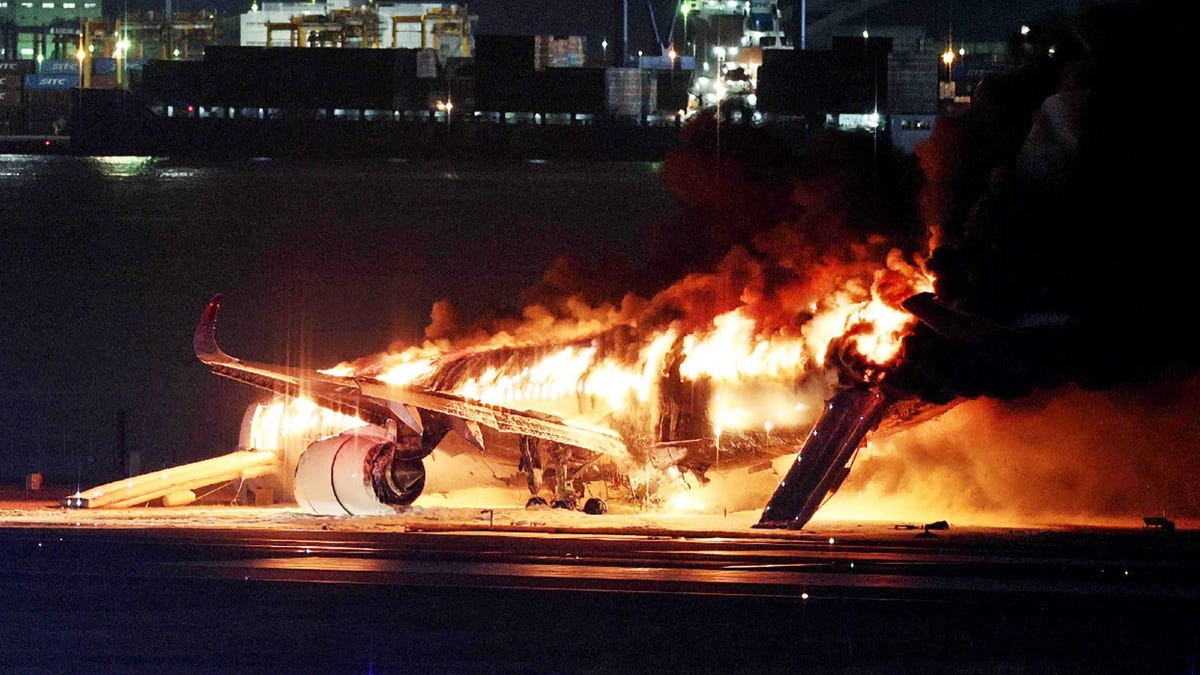On January 2, a Japan Airlines Airbus A350 with 379 people on board crashed into a Japanese Coast Guard plane at Tokyo’s Haneda Airport. It left five of the six Coast Guard crew members dead and caused the A350 to burst into flames after it skidded down the runway. Luckily, everyone on board evacuated safely and there were just 14 minor injuries.
So, we know the result of what happened, but we still aren’t totally sure how or why it happened. A full investigation is being conducted as you read this story, but a number of reporters at USA Today took it upon themselves to reconstruct the events leading up to and following the fiery crash. As it turns out, the whole situation may have been avoided if the Coast Guard De Havilland Canada DHC-8 Dash 8 had been equipped with a transponder.
Here’s how the situation unfolded, according to USA Today:
Japan Airlines Flight JAL-516, an Airbus A350-900, was making a normal landing on Runway C at about 5:47 p.m. local time when the crash occurred.
The jet caught fire shortly after striking the Coast Guard plane, a turboprop De Havilland Canada DHC-8 Dash 8 that was waiting for takeoff. Passengers used evacuation slides to scramble off the jet before it was engulfed in flames.
In terms of a cause, well, like I said before, it’s going to take a little bit of time, but USA Today found that the Coast Guard plane wasn’t equipped with a modern ADS-B transponder. Here’s what that means and why it’s so important:
ADS-B is an acronym for Automatic Dependent Surveillance-Broadcast, according to the Federal Aviation Administration. It provides a three-dimensional position and identification of aircraft or other vehicles.
ADS-B transponders automatically broadcast information about an aircraft, including:
Global Positioning System location.
Altitude
Ground speed.
The information is relayed by satellite-linked GPS to air traffic controllers and other aircraft once every second. It’s considered more accurate than conventional radar systems.
Since the collision happened after dark, it may have been hard for the A350 pilots to see to relatively small Coast Guard plane (USA Today included a handful of very helpful size diagrams that illustrate the planes’ size discrepancy very well).
Here’s what went down after the crash, according to USA Today:
Passengers told Japan news agencies they felt the impact of the landing and had to leave the jet at the front because the back and middle doors couldn’t be opened.
It took more than 100 firefighting vehicles six hours to extinguish the blaze.
As we previously reported, the Coast Guard plane was heading to a different part of Japan to deliver relief supplies after an earthquake killed at least 55 people. The Japan Airlines plane was arriving from the New Chitose Airport in Sapporo, Japan.
Anyway, you should all head over to USA Today for more information, helping graphics and video breakdowns of the crash.

